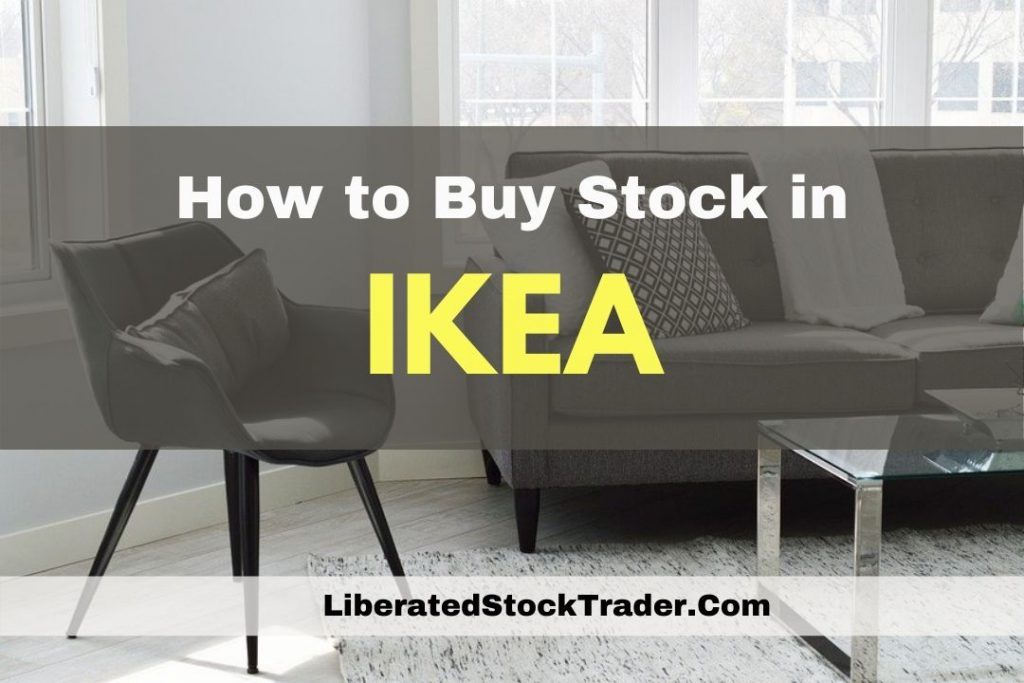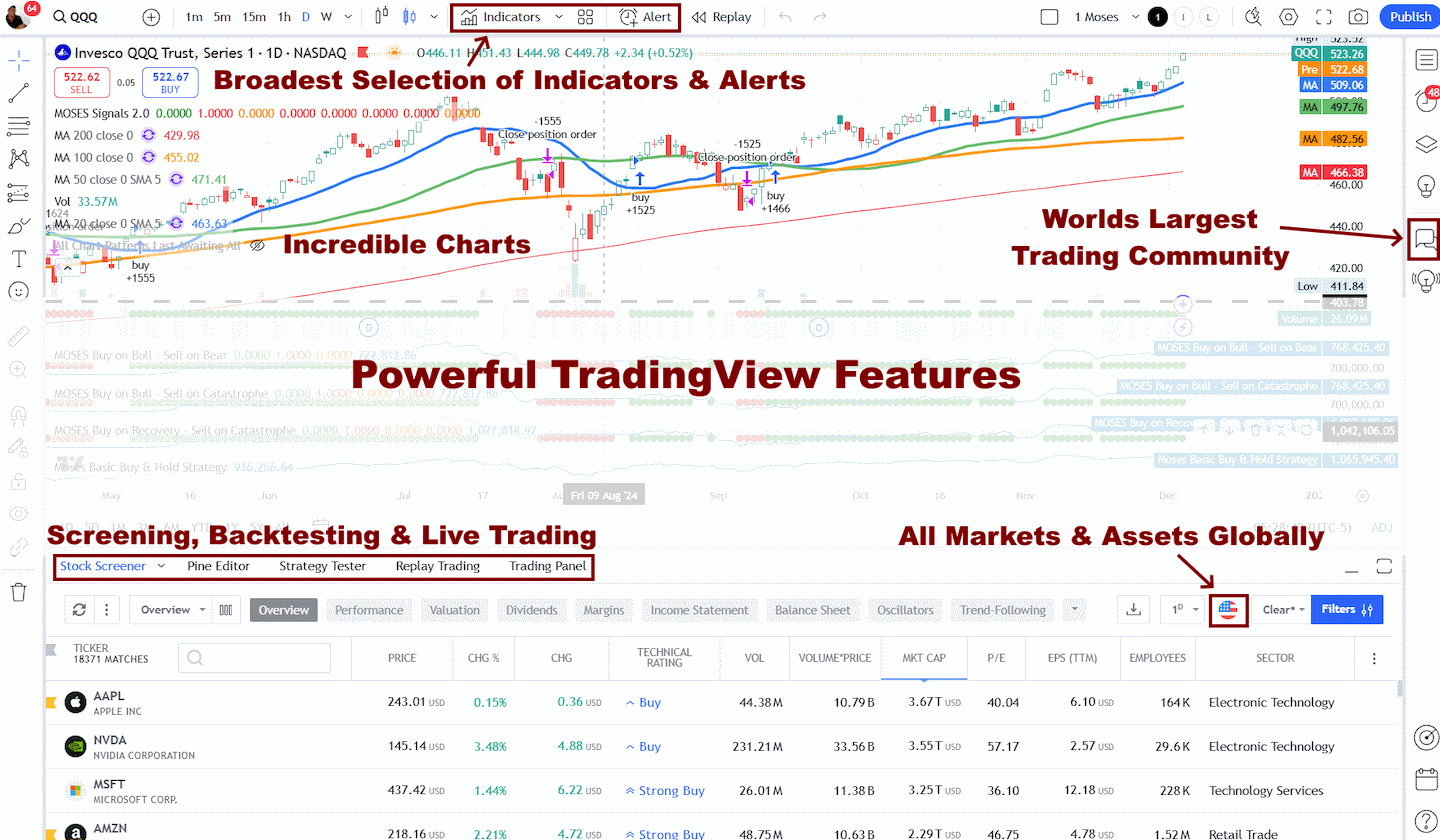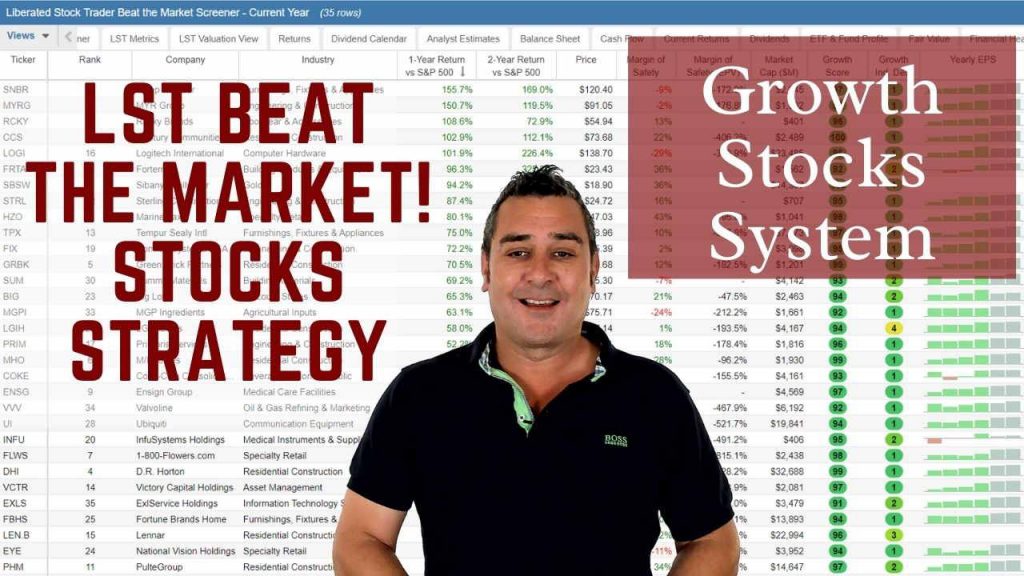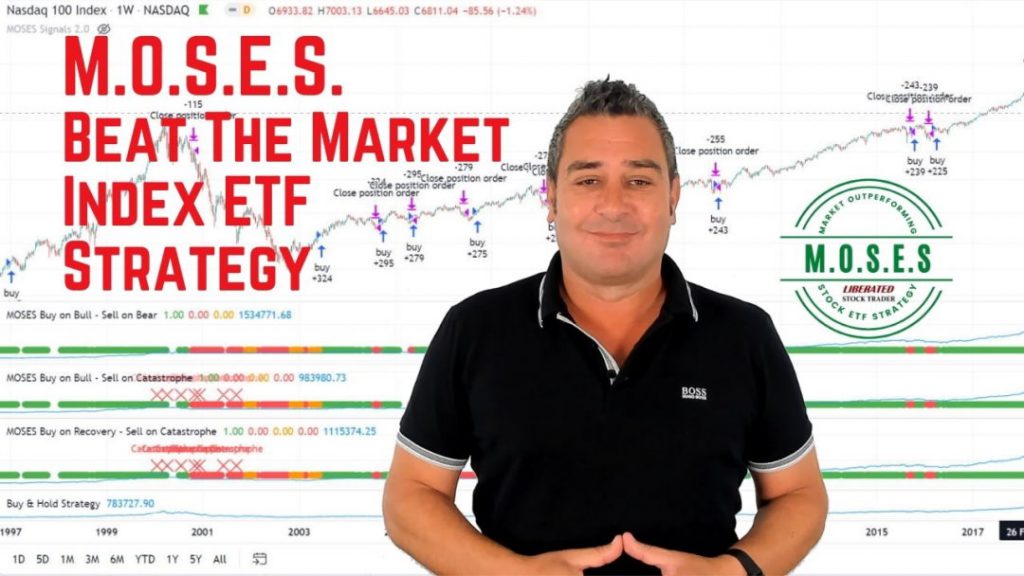You can’t purchase IKEA stock as the company is privately held by the Interogo Foundation, which wholly owns Inter IKEA and controls all IKEA shares.
Simple and sleek designs, low prices, and self-assembly furniture are the hallmarks of Ikea.
Love it or hate it, Ikea’s rise to home furnishing global dominance makes it one of Europe’s greatest exports.

Note: This is an unbiased research report. The author or Liberated Stock Trader is not affiliated, paid by, or owns stock in any of the companies mentioned in this report.
IKEA Stock
You cannot buy IKEA stock because the company is privately held by the Interogo Foundation. Interogo wholly owns Inter IKEA and fully controls all IKEA shares. You cannot buy IKEA stock because its shares are not floated on any exchange.
IKEA Stock Price
IKEA has no publicly available stock price because its shares are not traded on any stock exchange. There is no valuation for IKEA stock because the company is owned by a private foundation established by Ingvar Kamprad, with the sole goal of securing the legacy of the IKEA concept.
IKEA has a complicated business model with two owners: INGKA Holding B.V. and the Interogo Foundation. Under the current ownership model, the IKEA Group is a franchisee that pays 3% royalties to Inter IKEA Systems, also known as INGKA Holding B.V. Inter IKEA Systems is the official name for the company that franchises IKEA.
Under the current business model, the IKEA Group, which INGKA Holding B.V. owns, operates the stores. However, Inter IKEA Systems or Inter IKEA Holding B.V. owns the IKEA Concept and supplies the furniture they sell in the IKEA stores.
The Interogo Foundation, a self-owned investment entity based in Liechtenstein, is the ultimate owner of the IKEA Group and Inter IKEA Holding B.V. Inter IKEA Holding B.V. franchises the IKEA brand and products to several companies worldwide. Those companies include Inter IKEA Systems B.V., IKEA of Sweden AB, IKEA Supply AG, and IKEA Communications AB.
IKEA Stock Symbol
There is no stock symbol for IKEA because the Interogo Foundation privately holds IKEA. The foundation’s goal is to ensure the IKEA business and vision continue in perpetuity without outside interference. So, IKEA has never been floated on a stock exchange and has no stock ticker.
IKEA IPO
IKEA’s complex business structure has been designed to ensure there will never be a need for an initial public offering (IPO). The Interogo Foundation’s mission is to plan for IKEA’s ongoing operations and build finances to ensure IKEA can survive in difficult economic times. We see no evidence of an IPO being considered in the future.
If an IKEA IPO existed, the Interogo Foundation must reveal its finances by complying with transparency requirements. That means they will have to explain what the Interogo Foundation is and what it does with the money.
The management of a publicly held IKEA would have to explain its business model and operations to shareholders.
Instead, I believe IKEA will stay private for the foreseeable future. As long as IKEA remains private, it can keep its weird business structure, and managers will not have to explain why the company makes less money.
I predict there will be no IKEA ticker symbol in the foreseeable future because nobody at IKEA wants to be accountable to stockholders.
My thorough testing awarded TradingView a stellar 4.8 stars!
With powerful stock chart analysis, pattern recognition, screening, backtesting, and a 20+ million user community, it’s a game-changer for traders.

Whether you're trading in the US or internationally, TradingView is my top pick for its unmatched features and ease of use.
Explore TradingView – Your Gateway to Smarter Trading!
3 Great IKEA Alternative Investments
There is no IKEA stock, but some good IKEA alternatives exist in the stock market. Some of IKEA’s biggest and most successful rivals are publicly traded.
1. Lowe’s Companies Inc. (LOW)
As of the latest available information, Lowe’s Companies Inc. has been focusing on strategic growth and recognition of its partnerships. The company announced its 2023 Vendor Partners of the Year, honoring Hixson Lumber, GE Appliances, and PrimeSource for contributing to Lowe’s success. This annual recognition reflects Lowe’s commitment to fostering strong vendor relationships crucial for retail operations and customer satisfaction.
View the Lowes Chart Live in TrendSpider
Lowe’s has maintained its communication with investors through regular updates, such as hosting its Third Quarter 2023 Earnings Conference on November 14, 2023. These earnings calls are key for the company to discuss financial performance, operational achievements, and forward-looking strategies.
While the specific details of Lowe’s financial performance in these updates are not provided in the search results, these events typically include discussions of sales figures, profitability, store performance, and online business growth. They also offer insights into how Lowe’s is navigating the retail environment, which has been impacted by factors like supply chain issues, changing consumer behaviors, and economic fluctuations.
Lowe’s operates over 2,000 stores, and its store count peaked at 2,152 in 2017. However, the company’s store count has shrunk recently because it has closed smaller hardware stores.
Ever Dreamed of Beating the Stock Market
Most people think that they can't beat the market, and stock picking is a game only Wall Street insiders can win. This simply isn't true. With the right strategy, anyone can beat the market.

The LST Beat the Market Growth Stock Strategy is a proven system that has outperformed the S&P500 in 8 of the last 9 years. We provide all of the research and data needed to make informed decisions, so you no longer have to spend hours trying to find good stocks yourself.
The LST Beat the Market System Selects 35 Growth Stocks and Averages a 25.6% Annual Return
★ 35 Stocks That Already Beat The Market ★
★ Buy The Stocks & Hold For 12 Months - Then Rotate ★
★ Fully Documented Performance Track Record ★
★ Full Strategy Videos & eBook ★
Take The Pain Out Of Stock Selection With a Proven Strategy
2. TJX Companies Inc. (NYSE: TJX)
The TJX Companies (TJX) is one of IKEA’s biggest direct competitors. TJX competes with IKEA by operating the HomeGoods, Sierra, and Homesense furnishing stores in the United States.
TJX operates over 4,500 stores in nine countries. The TJX retail brands include Homegoods, T.J. Maxx, Sierra, Winners, Homesense, Marshalls, and T.K. Maxx.
Like IKEA, TJX has a unique business model that offers deep discounts on high-quality products. Unlike IKEA, TJX sells clothing, including many fashion items. However, some TJX stores sell furniture and home furnishings in direct competition with IKEA.
Many Americans shop at TJX stores because it sells many unique and unusual items, including name-brand fashions, at low prices. TJX can offer deep discounts because it sources items directly from over 21,000 vendors in over 100 countries. In contrast to many American retailers, TJX concentrates on sales to a working-class market and shoppers in urban areas.
TJX can make enormous amounts of money from its stores. The TJX Companies reported $50 billion in annual revenues for 2022.
TJX recovered quickly from the pandemic, and its stock price increased 100% from 2020 to 2023, and it has increased by 200% in the last five years to 2023.
3. Wayfair Inc. (NYSE: W)
The American furniture and home-goods website Wayfair (W) is the eighth most popular US e-commerce website. Wayfair has almost 20 million active customers.
The latest business news for Wayfair Inc. (NYSE: W) includes their announcement of the Third Quarter 2023 results, which reports positive year-over-year revenue growth with strong order momentum and profitability. This is a significant development for the company, indicating a rebound in their business performance amidst the challenges faced by e-commerce and retail sectors in recent times.
Wayfair’s positive growth trajectory is a notable turnaround, as the company, like many in online retail, had previously faced headwinds from changing consumer spending patterns post-pandemic, supply chain disruptions, and increased competition.
The company’s growth and profitability in the third quarter of 2023 suggest that Wayfair’s strategic initiatives yield positive results, perhaps focusing on operational efficiency, customer experience, or inventory management. This news is likely to be well-received by investors. It could impact Wayfair’s stock performance, reflecting confidence in its ability to navigate a competitive and dynamic e-commerce landscape.
Stock Rover estimates that Wayfair’s revenues will grow at an astounding rate in 2022.
The IKEA Business
IKEA’s businesses include stores and furniture factories operated by IKEA Industry AB. The factories manufacture many of the items IKEA sells.
IKEA operated 445 stores worldwide in 2020, Statista estimates. The number of IKEA stores grew from 345 in 2013 to
IKEA is unusual because its stores feature restaurants, groceries, and furniture. IKEA’s trademark is self-assembled low-cost furniture with simple modern designs.
The name IKEA is an acronym for Ingvar Kamprad Elmtaryd Agunnaryd. Ingvar Kamprad was IKEA’s founder, Elmtaryd was Kamprad’s family farm in Sweden. Agunnaryd is the Swedish parish (county) where Elmtaryd is located.
Kamprad founded IKEA in 1943 and started selling furniture in 1948. In 1950, Kamprad published the first IKEA catalog. The first IKEA showroom opened in Sweden in 1953, and the first IKEA restaurant began in 1960.
The first IKEA store outside of Sweden opened in Norway in 1963. In 1965, IKEA opened the largest furniture store in Northern Europe at Kungens Kurva, outside Stockholm. That store became IKEA’s flagship location. IKEA introduced self-service in 1971 after a fire damaged its flagship store.
IKEA expanded throughout Europe in the 1970s and overseas to Canada, Hong Kong, and Singapore simultaneously. It entered the United States in 1985 and the United Kingdom in 1987, and it entered Latin America in 2010.
Does IKEA Make Money?
IKEA has been navigating a complex global business environment while continuing to pursue growth and expansion. According to a recent news release, despite the challenges posed by the pandemic, supply chain disruptions, and economic headwinds, IKEA has managed to maintain a growth trajectory.
The company has seen store sales growth primarily in Europe, a region heavily impacted by FY21 lockdowns. However, IKEA also reported that its online sales were 10% lower than FY21. This could be attributed to easing pandemic restrictions and more customers returning to in-store shopping experiences.
In the United States, IKEA has reported a slight increase in total sales in 2022 despite rising costs and supply challenges. The company has focused strongly on affordability and accessibility, central to its brand promise and customer value proposition.
As outlined in their review, IKEA has achieved EUR 44.6 billion in retail sales globally and opened 38 new sales locations, bringing the total number of IKEA co-workers worldwide to approximately 231,000.
For the financial year 2023, IKEA announced total retail sales of EUR 47.6 billion, marking an increase of 6.6% (7.3% when adjusted for currency impact), according to their financial year 2023 retail sales announcement. This growth is significant, considering the ongoing global economic pressures.
According to Reuters, IKEA is also investing in the United States with a $2.2 billion plan to expand and challenge major competitors like Walmart and Wayfair. This investment will fund the expansion over the next three years, indicating a strong commitment to the U.S. market.
The company has seen a 5.7% growth and is reinforcing its commitment to sustainable living, with a 7% increase in store visitation and online sales accounting for 26% of total sales.
IKEA is also innovating with new store formats to sustain success. In the U.S., IKEA reported $5.9 billion in total sales, including food and services, and a nearly 19% increase in e-commerce sales.
These developments suggest that IKEA is not only growing in sales and physical presence but is also adapting to the evolving retail landscape by enhancing its e-commerce capabilities and experimenting with new store formats to better meet customer needs.
In summary, IKEA continues expanding its global footprint, emphasizing growth in the U.S. market and focusing on sustainability and affordability. Despite lower online sales compared to the previous fiscal year, the company is seeing an overall increase in sales. It responds to business challenges with strategic investments and a commitment to innovation. The expansion plans and new store formats indicate that IKEA is positioning itself to remain a dominant player in the home furnishings sector, even as it navigates the complexities of the current economic climate.
Summary
You cannot buy IKEA stock, and there is no stock symbol for it. There is no plan for an IKEA IPO, as the company is owned by a foundation that will ensure its independence.
In the final analysis, traditional retailers such as Lowe’s and TJX Companies are probably better investments than IKEA. Investors do not need IKEA stock because they can find many excellent alternatives.
Beat The Market, Avoid Crashes & Lower Your Risks
Nobody wants to see their hard-earned money disappear in a stock market crash.
Over the past century, the US stock market has had 6 major crashes that have caused investors to lose trillions of dollars.

The MOSES Index ETF Investing Strategy will help you minimize the impact of major stock market crashes. MOSES will alert you before the next crash happens so you can protect your portfolio. You will also know when the bear market is over and the new rally begins so you can start investing again.
MOSES Helps You Secure & Grow Your Biggest Investments
★ 3 Index ETF Strategies ★
★ Outperforms the NASDAQ 100, S&P500 & Russell 3000 ★
★ Beats the DAX, CAC40 & EURO STOXX Indices ★
★ Buy & Sell Signals Generated ★
MOSES Helps You Sleep Better At Night Knowing You Are Prepared For Future Disasters
